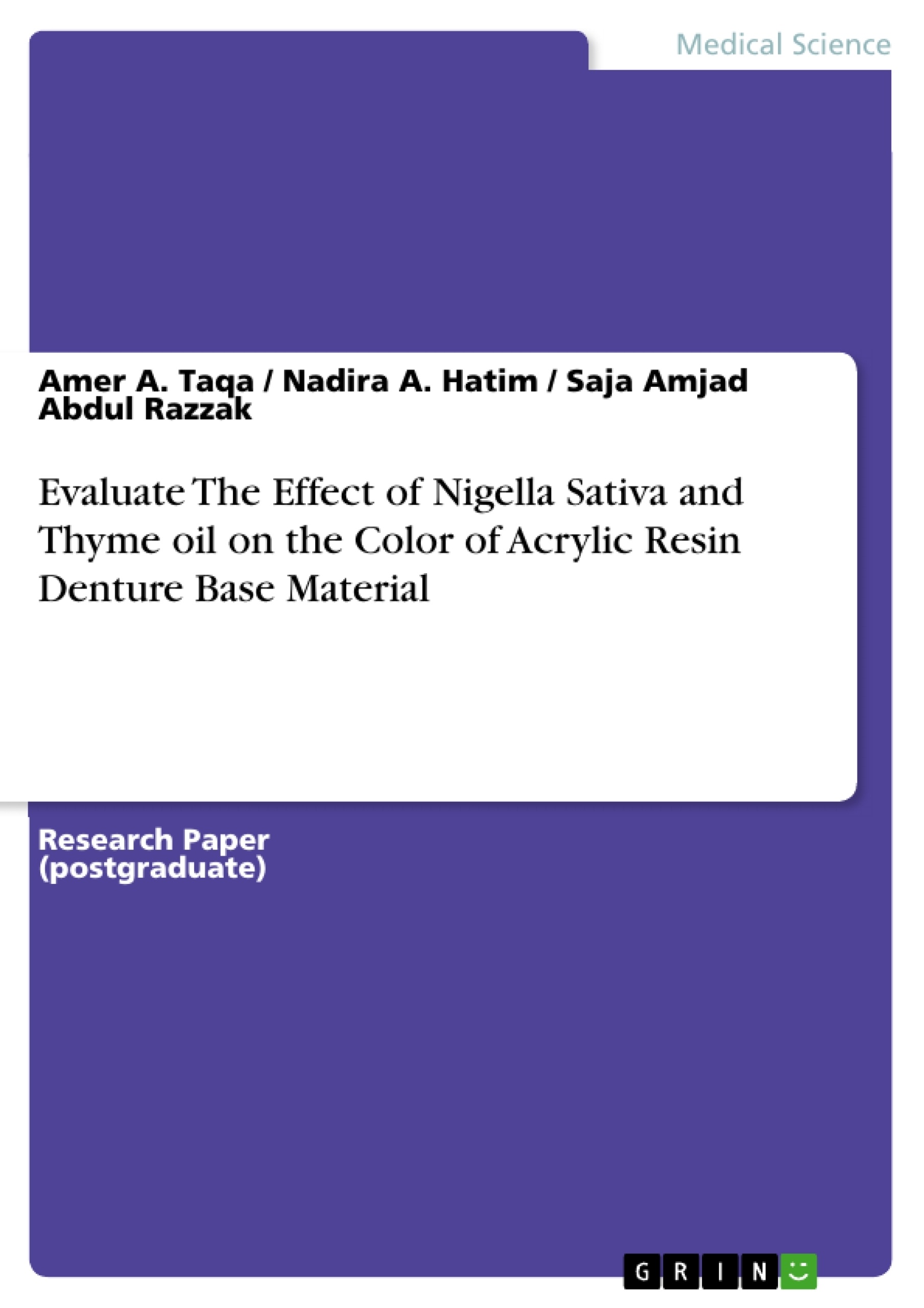The total number of samples (45) were divided into three main groups cured according to three curing cycles (The standard short cycle, rapid was subdivided into three subgroup: The control group (without additives), samples prepared with the addition of Nigella Sativa , and samples prepared with the addition of Thyme oil. Color was measured for all the samples. Results were analyzed statistically by (Descriptive statistics, ANOVA and Duncan’s multiple range test) and showed that both additives(Nigella Sativa and Thyme oil) showed significant changes in the color of denture base. conclusion Both additives (Nigella sativa and Thyme oil) showed significant changes in the color of acrylic resin denture base material. The addition of Thyme oil to the samples cured by the regular heat curing cycle showed color change (ΔE=3.376) in relation to the standard (ADA) cycle which is an acceptable range in vitro.
This study were to evaluate the effect of Nigella sativa and Thyme oil on The color of Acrylic Resin Denture Base Material.
Inhaltsverzeichnis (Table of Contents)
- Abstract
- Introduction
- Materials and Methods
- Color Test (by the use of VITA Easyshade)
- Results
- Color Change Test
- By The Use of VITA Easyshade
- Measuring Color Changes According to the (CIE L* a* b*) Color System
- Citation du texte
- Dr. Amer A. Taqa (Auteur), Nadira A. Hatim (Auteur), Saja Amjad Abdul Razzak (Auteur), 2012, Evaluate The Effect of Nigella Sativa and Thyme oil on the Color of Acrylic Resin Denture Base Material, Munich, GRIN Verlag, https://www.grin.com/document/207697



